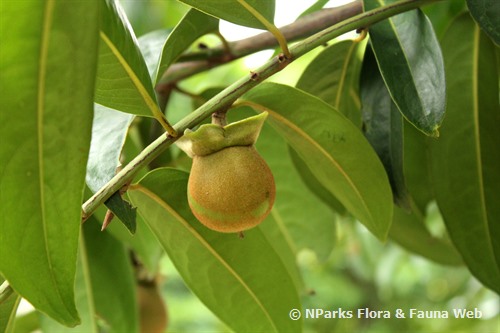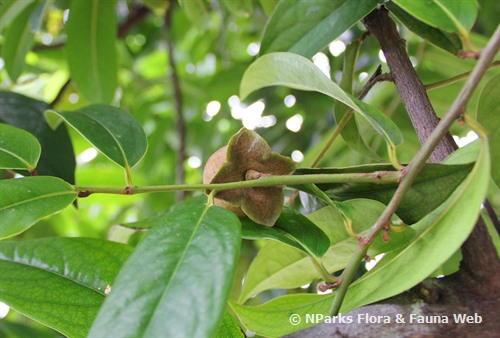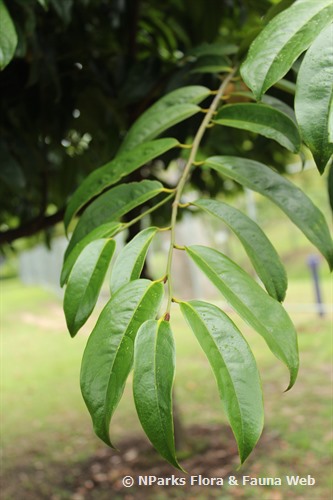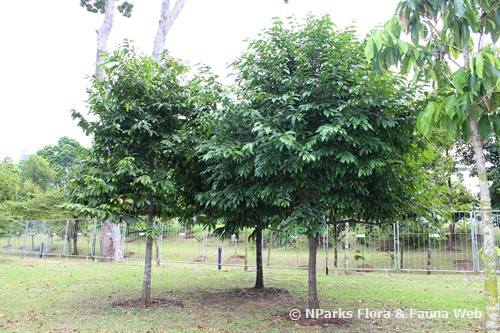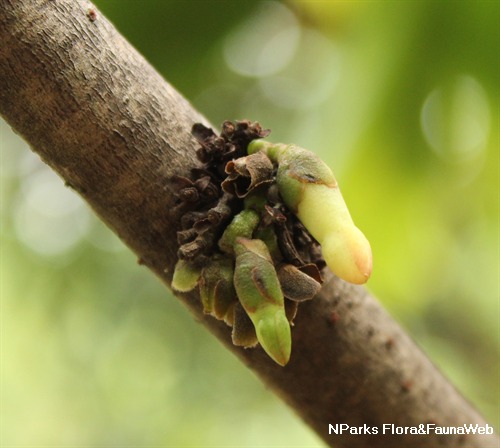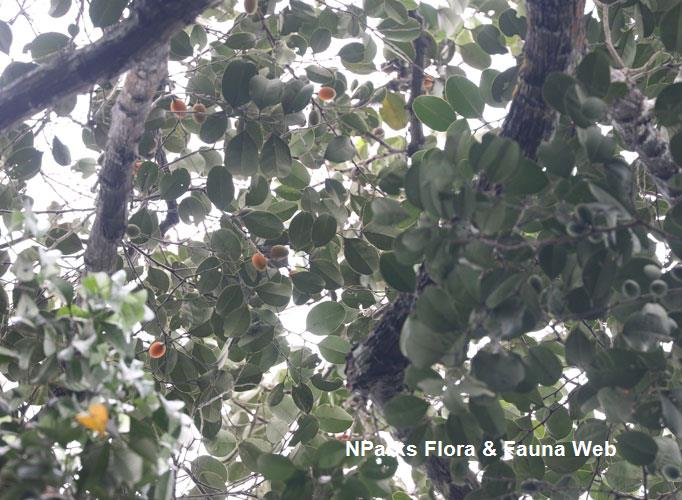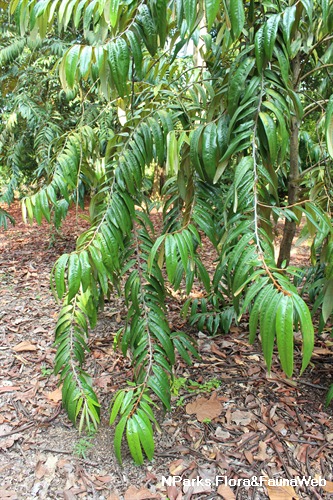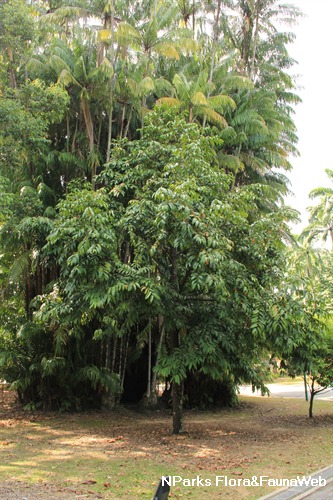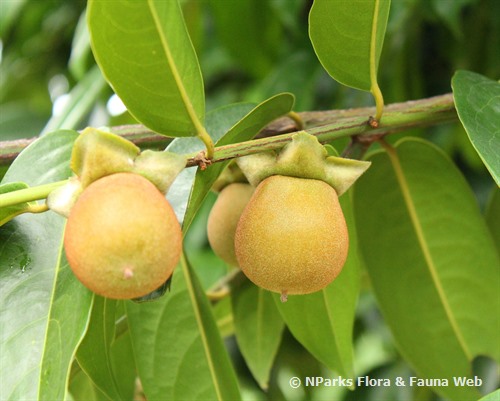
Name
Classifications and Characteristics
| Plant Division | Angiosperms (Flowering Seed Plants) (Dicotyledon) |
|---|---|
| Plant Growth Form | Tree (Medium (16m-30m)) |
| Lifespan (in Singapore) | Perennial |
Biogeography
| Native Distribution | Indonesia, Malaysia |
|---|---|
| Native Habitat | Terrestrial |
| Preferred Climate Zone | Tropical |
Description and Ethnobotany
| Growth Form | Diospyros areolata is a medium sized tree grows up to 30 m tall. |
|---|---|
| Foliage | Its leaves are ovate to oblong, measuring 8-26 cm long and 3-9 cm wide, arranged alternately. |
| Stems | Young stems are hairy and reddish, becoming glabrous with age. |
| Flowers | Both the male and female flowers have velvety calyx. The calyx are divided into four triangular lobes. |
| Fruit | The fruits of Diospyros areolata are globose, measuring around 4 cm in diameter, covered with reddish-brown hairs when young. |
| Etymology | Diospyros is derived from two Greek words, dios (divine) and pyros (wheat), meaning divine wheat (fruit). |
Landscaping Features
| Desirable Plant Features | Ornamental Fruits |
|---|---|
| Landscape Uses | General, Parks & Gardens |
Plant Care and Propagation
| Light Preference | Full Sun |
|---|---|
| Water Preference | Moderate Water |
| Plant Growth Rate | Moderate |
| Rootzone Tolerance | Well-Drained Soils, Fertile Loamy Soils |
| Propagation Method | Seed |
Foliar
| Foliage Retention | Evergreen |
|---|---|
| Mature Foliage Colour(s) | Green |
| Foliar Type | Simple / Unifoliate |
| Foliar Arrangement Along Stem | Alternate |
Floral (Angiosperm)
| Flower Colour(s) | Cream / Off-White |
|---|
Fruit, Seed and Spore
| Mature Fruit Colour(s) | Orange |
|---|
Image Repository
Others
| Master ID | 29626 |
|---|---|
| Species ID | 3935 |
| Flora Disclaimer | The information in this website has been compiled from reliable sources, such as reference works on medicinal plants. It is not a substitute for medical advice or treatment and NParks does not purport to provide any medical advice. Readers should always consult his/her physician before using or consuming a plant for medicinal purposes. |

